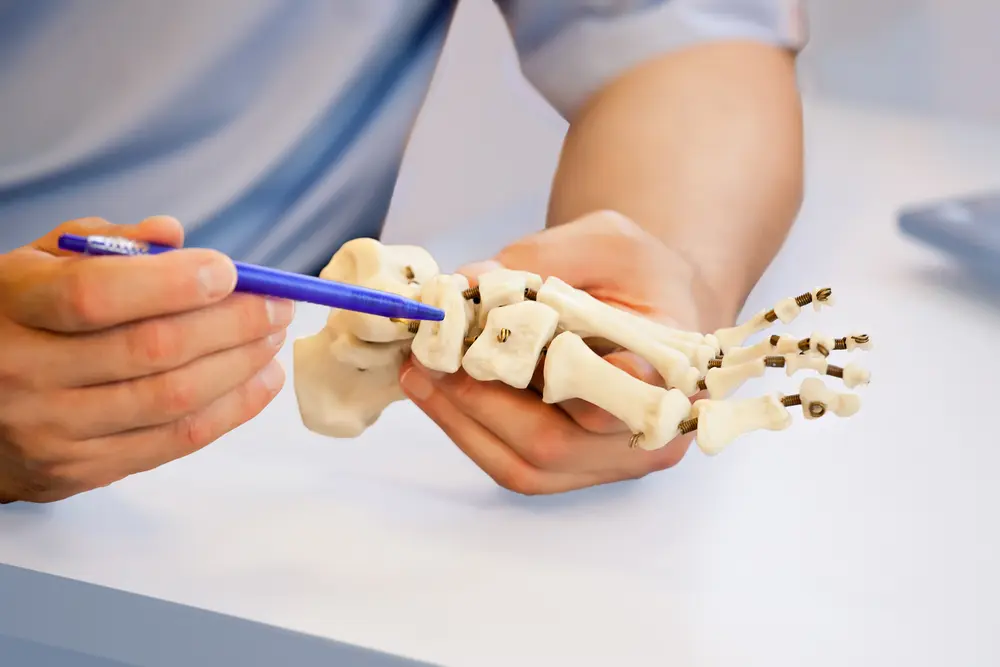
Whether due to premature joint degeneration or a disease of the immune system, foot arthritis is a very uncomfortable condition.
Arthritis is usually characterized by musculoskeletal pain accompanied by day-to-day difficulties in mobility.
Joints like knees, hips and ankles are particularly vulnerable to this condition.
Currently, there is no single medical solution that completely cures foot arthritis.
However, by acting from the onset of the first symptoms, it is possible to reduce the impact of the ensuing complications.
Let’s examine what causes this degenerative disorder and how to effectively relieve it.
Symptoms of foot arthritis
When arthritis affects the feet, it generally takes two forms: rheumatoid arthritis and osteoarthritis.
Rheumatoid arthritis is an inflammatory condition caused by an autoimmune disease where heredity can be an aggravating factor.
This form of arthritis affects people of all ages, and is 2 to 3 times more prevalent among women.
The symptoms associated with rheumatoid arthritis include:
- Joint pain
- Joint stiffness at the start of the day
- Considerable swelling of the joints and hotness to the touch
- Pain in the tendons
- Redness around the affected areas
- The presence of a bunion (Hallux valgus)
- Difficulty in performing daily tasks such as climbing stairs or opening a container
- The formation of small growths under the feet (nodules)
- Hammer toe
Foot arthritis is caused by abnormal wear of the cartilage surrounding our bones.
The progressive nature of this condition makes its appearance rare before the age of 40.
The following symptoms may indicate the presence of foot arthritis:
- Inflammatory joint pain during physical activity
- Difficulty moving without discomfort
- Stiffness in the affected joints
- Audible crackling or a grinding sensation during movement
- Reduced toe-joint mobility
- Bone growths
- A feeling of disequilibrium
No matter what form it takes, foot arthritis can become a real disability if not managed rapidly.
It is important to seek the advice of a podiatrist or health care professional as soon as the first symptoms appear.
Causes of foot arthritis
Although arthritis is a relatively common condition, its causes are not always obvious, especially in the case of rheumatoid arthritis.
However, various factors come into play to explain the occurrence of foot arthritis:
- An advanced age (40 years and older)
- A serious foot injury that did not heal properly
- The repeated practice of a sport such as jogging, which places excessive strain on the joints of the lower limbs.
- Pre-existing deformities such as valgum knee or flat foot
- Obesity
- Heredity
- Ligament or muscle weakness
Preventive measures
While it is true that foot arthritis cannot be completely cured, nothing should prevent you from adopting certain measures to slow its progression.
Here are some preventive measures that can help slow the progression of foot arthritis:
- Maintaining a healthy weight
- Practising a low-intensity sport like yoga, Tai-chi or swimming
- Wearing shoes adapted to the shape of your foot and that provide proper support
- Adding a stretching and strengthening workout to your regular routine
- Acquiring orthopedic insoles or orthopedic shoes adapted to the specific requirements of your feet
If a joint becomes uncomfortable to the point of interfering with your daily activities, it is important to contact a podiatrist or a healthcare professional.
They will be able to perform a series of tests to identify the most problematic area.
The diagnosis can also help to identify the likely causes of arthritis in your feet.
Treating foot arthritis
Once your podiatrist has made a diagnosis, they will be able to choose the treatment best suited to the type of foot arthritis.
Among other things, the podiatrist may recommend:
- Prescription anti-inflammatory medication
- Ultrasound-guided cortisone injection (intra-articular)
- Plantar orthotics to correct a supination that contributes to the pain.
- Therapeutic laser treatment
- Shockwave therapy
Although not always systematic, surgery may be the only possible solution.
Depending on the type of arthritis, its level of intensity and the area of the foot affected, the podiatrist may determine the most appropriate surgery.
The most common corrective surgeries associated with foot arthritis are:
- Arthrodesis, which consists in blocking the affected joint by fusing the bones together
- Arthroplasty, which requires the removal or complete replacement of the damaged joint
Although foot surgery is a practical way to control pain, it remains a last resort.
Moreover, the podiatrist will do everything possible to suggest alternative therapeutic methods to surgery.